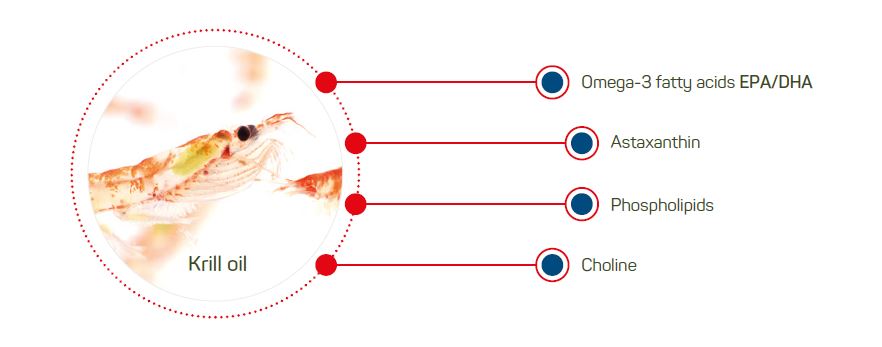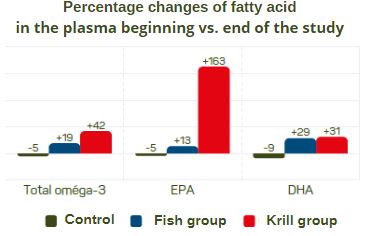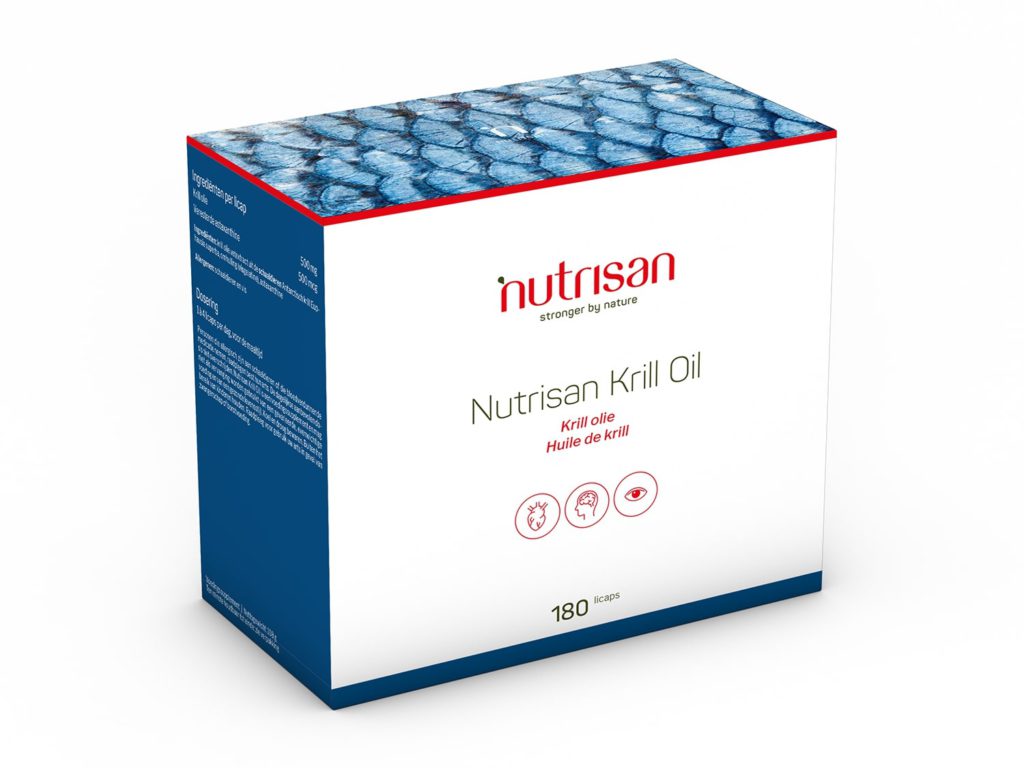Omega-3 fatty acids… You’ve probably heard about it, you know it’s good for you and you know it’s present in fish.
But what does it have to do with krill and what is krill anyway? Read more about how krill oil offers a good alternative to supplementing omega-3 fatty acids such as EPA and DHA
What is krill?
Antarctic krill, or Euphausia superba, are small crustaceans from the Antarctic deep sea. They are very similar to small shrimps and are one to six centimetres long.
Krill is a good source of omega-3 fatty acids such as EPA and DHA. In krill, the omega-3 fatty acids are bound to phospholipids, which makes them more absorbable than they are bound to triglycerides, as is the case with fish. Moreover, krill oil is not only a source of omega-3 fatty acids but also contains astaxanthin, choline and vitamin A and vitamin E. These small animals are therefore packed with good substances for the body.
Krill is the food of whales and penguins. They are almost at the bottom of the food chain.

Krill is the food of whales and penguins. They are almost at the bottom of the food chain.
Because of this low rank in the food chain, there is almost no accumulation of toxins or heavy metals.
Omega-3 fatty acids
Fat is generally considered to be something negative and has been avoided as much as possible in the daily diet in recent years. As a result, total fat intake in Western diets has decreased in recent years. It is important to realise that not all types of fats are bad and that fats occupy an important place in the functioning of our body and our energy metabolism.
Omega-3 fatty acids are polyunsaturated fatty acids or so-called essential fatty acids. These fatty acids are necessary for the body, but we cannot produce them ourselves, so we have to take these fatty acids from our diet and possibly supplement them with food supplements.
It is striking that the intake of omega-6 fatty acids has increased over the years in our western diet as opposed to the intake of omega-3 which has decreased. This disturbs the relationship between omega-6 and omega-3 fatty acids. This ratio is an important measure for the intake of omega-3 fatty acids. In the Western diet, this ratio is much higher (15-25:1) than the recommended ratio of omega-6 and omega-3 between 2-6:1 (Belgian recommendations (2003)). In order to restore this balance, it is important to take more omega-3 fatty acids.
EPA (eicosapentaenoic acid) DHA (docosahexaenoic acid) are typical fish fatty acids. But are also present in shellfish such as the krill.

Why is krill the best source of omega-3 fatty acids EPA and DHA?
In krill, the omega-3 fatty acids are bound to phospholipids. This is a different form from other omega-3 sources such as fish or fish oil. Phospholipids are structural fats that contain both a hydrophobic side and a hydrophilic side.
These are also the components of cell membranes in the body. These phospholipids can easily migrate through the cell membranes and therefore also easily through the intestinal wall. As a result, the omega-3 fatty acids from krill are more easily absorbed than the omega-3 fatty acids from other sources.

Image: Results of research in which effect of krill oil supplements, eating fish and placebo was investigated on the level of omega-3, EPA and DHA in the blood. The graph shows the increase or decrease of these three parameters after 8 weeks. Krill oil group: 4g krill oil per day, fish group: lean and oily fish according to dietary guidelines. (Source: Rundblad et Al.; Effects of krill oil and lean and fatty fish on cardiovascular risk markers: a randomised controlled trial; Journal of Nutritional Science (2018)).
Astaxanthin
Astaxanthin is a natural carotenoid that gives krill, salmon or flamingos their red colour and is known for its very high antioxidant capacity. Antioxidants protect tissues and cells from the damage that free radicals can cause in the body.
Why choose Nutrisan Krill Oil?
- Highest amount of astaxanthin on the market.
- Natural wholefood omega-3 from Antarctic krill (Euphausia superba) of proven quality, provides EPA and DHA and other interesting substances such as phospholipids and astaxanthin.
- Better absorption of the omega-3 fatty acids EPA and DHA, so a lower daily intake is sufficient.
- No fish taste or regurgitation + the ideal omega-3 for people who have difficulty digesting fats.
- Easy to swallow and completely odorless capsules.
- Durable catch.
Durable krill
Since krill is the food for various animals in the Antarctic Ocean, it forms an important part of the ecosystem in this area. As a result, the fishing of this krill is closely monitored.
The krill intended for the production of Nutrisan Krill Oil is fully compliant with the agreements of the CCAMLR of Commission for the Conservation of Antarctic Marine Living Resources.
- Respect for the ecosystem and other fauna such as the fish present.
- No overfishing: The annual krill catch is 40 times lower than the permitted quota.
- Patented production process of our krill oil provides a 20% higher yield per unit of krill compared to other conventional methods. This reduces the impact on the environment to a minimum and we support responsible management of the Antarctic waters.



